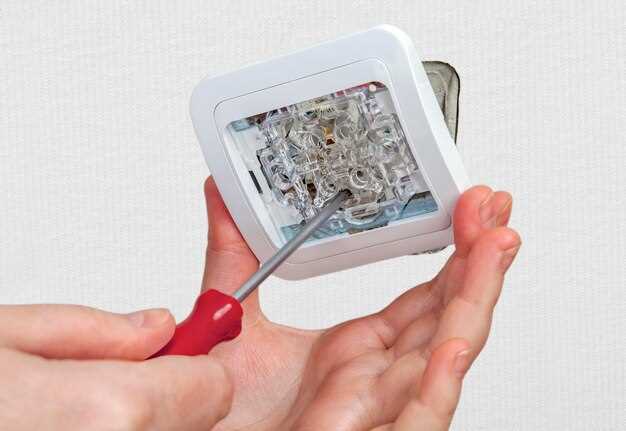

A malfunctioning thermostat can lead to serious issues with your vehicle’s engine performance, particularly affecting the overall cooling system. When the thermostat fails, it may cause your engine to overheat or fail to reach its optimal operating temperature, which can result in decreased fuel efficiency and increased emissions. Understanding how to replace a broken thermostat is crucial for maintaining your vehicle’s health and ensuring that it operates smoothly.
This step-by-step guide will walk you through the process of replacing a faulty thermostat, providing you with the essential knowledge to tackle this task confidently. Whether you’re a seasoned mechanic or a beginner, you’ll find that the steps outlined here are straightforward and informative. By following these instructions carefully, you can restore the functionality of your vehicle’s cooling system and keep your engine running efficiently.
Before you begin, it’s important to gather the necessary tools and replacement parts. A little preparation goes a long way in ensuring that this repair goes off without a hitch. Once you’re ready, follow along as we detail each step required to successfully replace your broken thermostat.
Identifying Symptoms of a Faulty Engine Thermostat
A malfunctioning engine thermostat can lead to serious issues, affecting both performance and efficiency. Recognizing the symptoms early can prevent costly repairs and ensure the longevity of your vehicle.
One of the primary indicators of a faulty thermostat is inconsistent engine temperature readings. If the temperature gauge fluctuates wildly or remains unusually low, it’s a sign that the thermostat may not be regulating coolant flow properly. This inconsistency can also lead to overheating, which can cause severe engine damage if left unchecked.
Another common symptom is poor engine performance. A faulty thermostat can prevent the engine from reaching its optimal operating temperature, leading to reduced power output and decreased fuel efficiency. Drivers may notice sluggish acceleration and diminished overall responsiveness, which can impact daily driving experience.
Furthermore, coolant leaks can signal thermostat problems. If the thermostat is stuck in a closed position, pressure can build up, leading to leaks around the housing or connections. This can not only reduce the efficiency of the cooling system but also pose a risk of engine overheating.
Lastly, steam or coolant odors can indicate a failing thermostat. If you notice steam rising from the engine bay or a sweet smell characteristic of coolant, it’s essential to investigate immediately. These symptoms, coupled with the aforementioned signs, indicate the pressing need for a thermostat replacement.
Necessary Tools and Materials for Thermostat Replacement

Replacing a broken thermostat requires specific tools and materials to ensure a smooth and successful operation. Before beginning the replacement process, gather the following items:
1. New Thermostat: Purchase a compatible thermostat for your vehicle’s engine model. Ensure it matches the specifications needed for optimal functionality.
2. Socket Set: A complete socket set, including a ratchet and various sizes of sockets, is essential for removing bolts and nuts securing the thermostat housing.
3. Wrench Set: A set of adjustable and combination wrenches will be useful for loosening and tightening various parts during the replacement.
4. Screwdrivers: Both flat-head and Phillips screwdrivers are necessary to remove any screws holding components in place around the thermostat.
5. Gasket or Sealant: To prevent leaks, you will need a new gasket for the thermostat housing or a suitable sealant if your engine design requires it.
6. Engine Coolant: Since the thermostat is part of the cooling system, make sure to have the right type of engine coolant available to refill the system after the replacement.
7. Drain Pan: Use a drain pan to collect any old coolant that may leak out when you remove the thermostat, protecting the environment and maintaining cleanliness.
8. Pliers: Pliers can help remove clamps that hold hoses connected to the thermostat and assist in handling any stubborn components.
9. Shop Towels or Rags: Keep shop towels or rags on hand to clean up spills and wipe off any excess coolant during the process.
Having these tools and materials ready will make the thermostat replacement process straightforward and efficient, minimizing risks and ensuring a properly functioning engine cooling system.
Step-by-Step Process for Removing and Installing a New Thermostat

Start by ensuring the engine is cool to avoid burns or injuries. Disconnect the negative battery cable to prevent electrical shock or short circuits during the process.
Locate the thermostat housing, typically found where the upper radiator hose connects to the engine. Remove any hoses or components obstructing access to the thermostat.
Unscrew the bolts holding the thermostat housing in place using the appropriate size socket or wrench. Carefully lift the housing to expose the thermostat. Take note of the orientation of the thermostat for proper installation of the new one.
Remove the old thermostat from its seat. Inspect the seating area for any old gasket material or debris and clean it thoroughly to ensure a proper seal with the new component.
Place the new thermostat in the same orientation as the old one, ensuring it fits snugly into the housing. Position a new gasket or sealant as recommended by the manufacturer to prevent leaks.
Reattach the thermostat housing by tightening the bolts securely but avoid over-tightening, which could strip the threads. Reconnect any hoses or components you previously removed.
Reconnect the negative battery cable and double-check all connections. Start the engine and allow it to reach operating temperature while monitoring for leaks around the thermostat housing. Check the engine temperature gauge to ensure the new thermostat is functioning properly.






